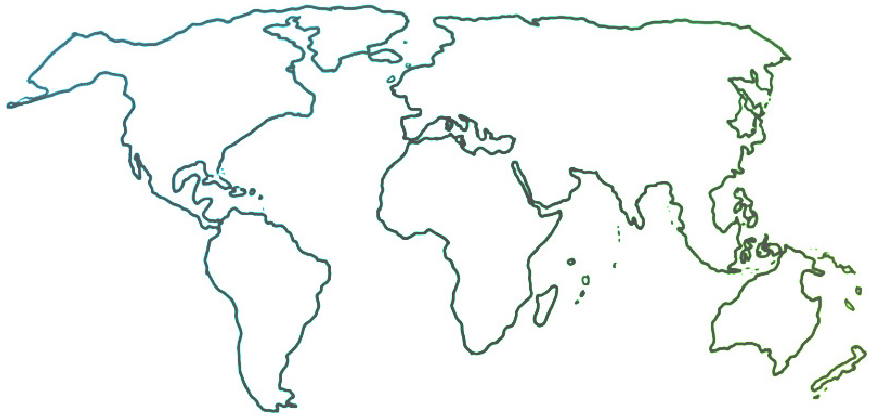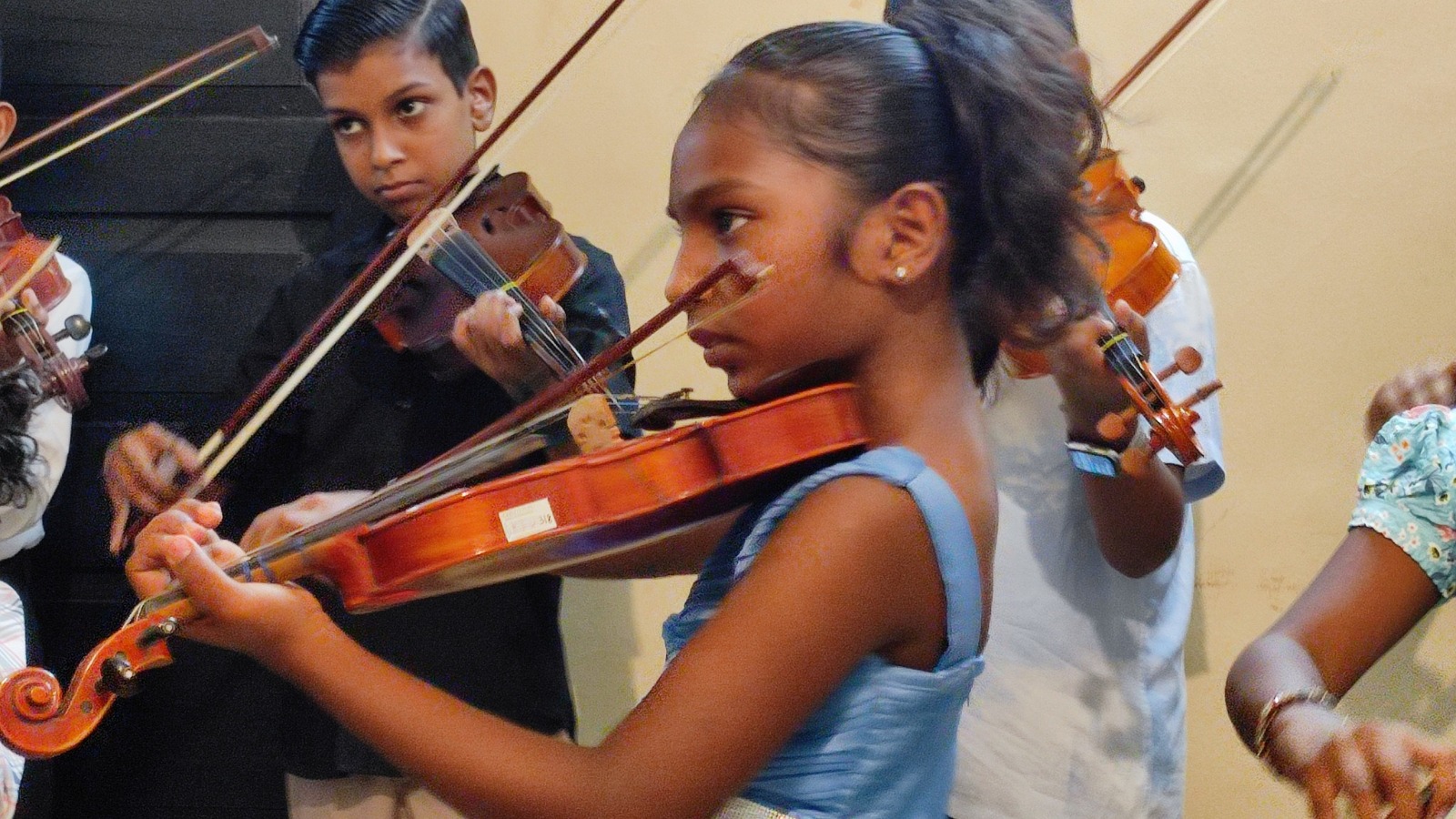
Child’s Play India’s Glass is Half-Full, Half-Empty

Our students love playing together. Photo: Child’s Play India Foundation.
Child’s Play (India) Foundation, a music education charity currently based in Goa, India, seeks to instill positive values and provide social empowerment to India’s disadvantaged children through the teaching of classical music at the highest possible standard. We are in our 16th year, and counting.
Like most educational initiatives around the world, we were deeply impacted by the Covid-19 pandemic. Everything came to a complete standstill for almost two years. Unlike more privileged settings, we could not make the switch to online teaching; we did try it, but most of our children did not have their own phones, and there were other issues, such as out of tune instruments, strings broken, and instruments outgrown. When the lockdown eventually lifted, many of our children had moved out of area or progressed to higher mainstream education which took them away from music lessons, either geographically or in terms of available time. We have had to start over, with new groups of children for violin and cello.

But there is also good news to balance things out. We have about 50 children, from age seven to the early 20s (and a few adult learners as well), in our project across three locations in North Goa, with ongoing discussions to expand into South Goa very soon. Each child gets two to three individual sessions per week, with the frequency increasing if there is an upcoming concert or performance. We have been able to widen the range of instrument disciplines to all the orchestral stringed instruments (violin, viola, cello, double-bass); we have added clarinets to our wind section, along with recorder and flute; we have also added trumpet. We already include piano and choir.
In addition, we have a fledgling library on our premises which has music scores, tutoring books, and illustrated children’s books on music; these are open to the whole community for free. We also have a piano practice room open to children and adults, for those who are studying piano but don’t have their own instrument at home.

A lot of the teaching, especially for strings and flute, is structured around Suzuki books. The children are also greatly influenced by Bollywood music and other influences. (We had one student who was hooked on Korean pop, to the extent she wanted to learn to speak Korean!) I myself have been teaching cello more since the pandemic; two of my girl students were inspired by a viral video of a female cello duo playing the Bollywood hit tune “Senorita” from the 2011 film Zindagi Na Milegi Dobara (roughly translated: “You only get one chance per life”). I transcribed a simpler version of the tune in C major, which they are learning.
Practice charts and reward stickers can also be motivators, with some submitting 100% charts; we award prizes for good attendance and progress. Some of our older students have become trainee teachers and even regular teachers. One of our senior flute students teaches recorder and flute to beginners.
The biggest obstacles to music learning, from the children’s perspective, are the burden of regular schoolwork and poor public transport accessibility and safety.
We are extremely excited about the beginning of a robust alliance with the Symphony Orchestra of India (SOI), the nation’s only professional, salaried orchestra of a world-class standard. SOI has regular biannual concert seasons and often features the world’s great conductors and soloists. Based in Mumbai, they have visited us for three years in succession, imparting week-long intensive music camps for strings (violin, viola, cello). This April, two young musicians from our orchestra Camerata Goa were chosen to participate in their SOI Music Academy orchestra in Mumbai. This augurs well for an even stronger partnership with the SOI, widening the palette of instrument disciplines, and creating a true national youth orchestra—raising the bar for children from all over India, not just Child’s Play, to experience the joys of ensemble music-making to a very high standard and to get a foretaste of the life of an orchestral musician.
We also have a choral partnership with experienced Swedish choral conductor and trainer Marie Bejstam. Her annual workshops over the last two years for children, adults, and aspiring choral directors have been enthusiastically received by the wider public here. Our choir sings an eclectic mix of repertoire in various languages ranging from English to the Indian languages they speak (Konkani, Hindi), as well as a few songs in Portuguese, Swedish, and even Latin. Bollywood and contemporary English-language pop music go down extremely well. Our last few concerts have featured songs by Pentatonix and Michael Jackson.

We have hosted benefit concerts by internationally renowned performers to enrich the cultural life in the state of Goa. Our Camerata Goa concerts are also a part of this endeavor, providing a platform not just for our students and teachers but for musicians in the wider community.
In Goa, Konkani popular music is a pervasive influence. One of our teachers arranged a Konkani popular song in a smoky jazz style for trumpet, keyboard and double-bass which was a highlight of our last in-house concert.
What we desperately still need is raising the level of the teaching. We have a cohort of diligent locally trained teachers, but if the quality of the teaching can be raised to a world-class level, it would realize our children’s potential more fully and at a quicker pace.
If you are an orchestral instrument teacher excited about teaching young children, and you can commit to working with us for a reasonable length of time (a few months is too short, in our experience), do get in touch. Every visiting teacher or musician, whether from New York, Berlin, or London, who has worked with our children, has been awe-struck by the staggering capacity of our children to assimilate and learn extremely quickly (“like sponges” has been the comment of more than one observer)—far beyond the pace of more privileged students in their home cities. India is a sleeping giant when it comes to music education, just as China was some decades ago. Help us awaken India’s GenNext to their fullest potential.

